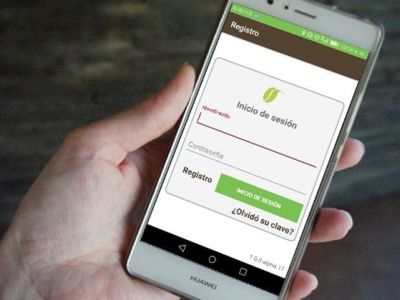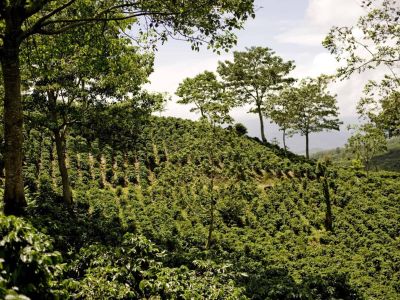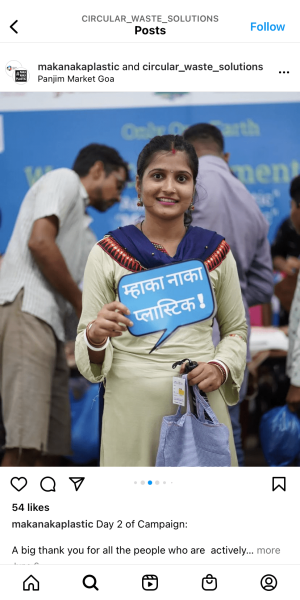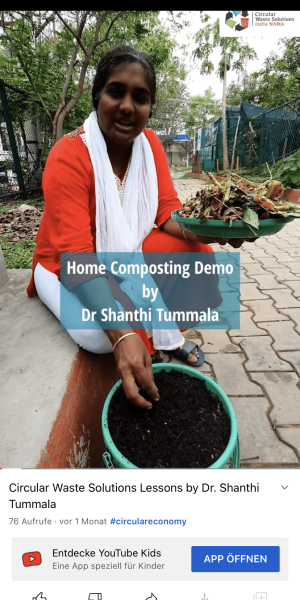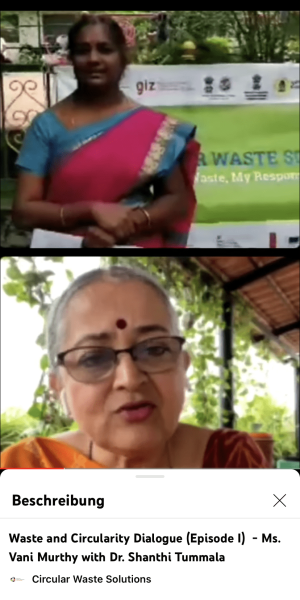Digital solutions for climate action:
NAMA Support Projects engage virtually while delivering ambitious climate action during Covid-19
The authors of this human interest story thank all NAMA Support Projects for the effort invested in providing their valuable input to help shape this story, titled ‘Digital solutions for climate action: NAMA Support Projects engage virtually while delivering ambitious climate action during Covid- 19’. This document helps contribute to overall efforts to capture and share lessons learnt from our project portfolio for future improvements to the NAMA Facility’s work. For general information and guidance please see the ‘General Information Document Ambition Initiative – Round Two for NAMA Support Projects’. Further, we want to thank staff at the Technical Support Unit of NAMA Facility for their valuable input and resources invested in the development of this story.
The NAMA Facility is a joint initiative of the German Federal Ministry for the Environment, Nature Conservation and Nuclear Safety (BMU), UK’s Department for Business, Energy and Industrial Strategy (BEIS), the Danish Ministry of Climate, Energy and Utilities (KEFM), the Danish Ministry of Foreign Affairs (MFA), the European Union and the Children’s Investment Fund Foundation (CIFF).
AFOLUAgriculture, Forestry and Other Land Use
BEIS UK’s Department for Business, Energy and Industrial Strategy
BMU German Ministry for Environment, Nature Conservation and Nuclear Safety
CIFF Children’s Investment Fund Foundation
DPP Detailed Preparation Phase
GHG Greenhouse Gas
GIZ Deutsche Gesellschaft für Internationale Zusammenarbeit (GIZ) GmbH
KEFM Danish Ministry of Climate, Energy and Utilities
M & E Monitoring and Evaluation
MFA Danish Ministry of Foreign Affairs
NAMA Nationally Appropriate Mitigation Action
NSO NAMA Support Organisation
NSP NAMA Support Project
RSF Risk Sharing Facility
SENAI National Service for Industrial Training Brazil
SMEs Small and medium-sized enterprises
TSU Technical Support Unit
The NAMA Facility – an agile, grant-based and multi-donor mitigation fund – efficiently distributes and mobilises finance for carbon-neutral development.
The NAMA Facility offers structured processes as well as financial mechanisms and technical support to partner countries to meet their climate goals.
The NAMA Facility provides tailor-made finance for climate change mitigation projects in all sectors, notably energy efficiency, renewable energy, transportation, waste and agriculture, forestry and other land uses (AFOLU). Partner countries, or implementing organisations on their behalf, can apply for funding through open competitive Calls. The most ambitious and feasible mitigation projects, which are called NAMA Support Projects (NSPs), are selected for support.
This support catalyses investment, strengthens capacities and triggers behaviour change, resulting in transformational sector-wide shifts to improve livelihoods, create co-benefits and establish carbon-neutral development pathways.
Since 2012
Over EUR 667 m
Currently funding 43 projects
Across 31 countries
Figures as of February 2022
Covid-19 as a catalyst for digitalisation among climate action projects
Together with climate change, globalisation and demographic change, digitalisation represents another key force changing our world considerably. The Covid-19 pandemic has fast-tracked digitalisation throughout different sectors across the globe. As Covid-19 and climate change have presented a dual threat, digitalisation and climate action should continue to be constructively interlinked to enable collaboration towards carbon-neutral solutions for a habitable world. As megatrends, emissions reduction and digitalisation have forced sectors and industries to undergo radical structural change. This shift presents not only opportunities for carbon-neutral technologies but can also evoke reciprocal effects between digitalisation and climate neutrality, as digitalisation itself is causing higher energy resource consumption and GHG emissions. In 2020 alone, it is estimated that production, use and disposal of digital services and infrastructures caused between 1.8 and 3.2% of global GHG emissions. Simultaneously, innovative technological and digital solutions play a significant role in tracking and quantifying emissions and providing solutions for climate change mitigation. Digitalisation not only enables new forms of transparency and collaboration but also provides data for better monitoring and communication, with new creative possibilities unfolding for partner countries to work on carbon-neutral solutions. Heavily affected by the pandemic and the resulting strain on economic resources, partner countries and organisations implementing NAMA Support Projects (NSPs) on their behalf, had to adapt quickly to continue their work. While the pandemic presented sudden obstacles for NSPs, it also accelerated digitalisation efforts in all sectors and project areas.
NSP’s digitalisation strategies during Covid-19
Frequent virtual meetings
Use of messaging apps
Supplying stable internet connection
Virtual sharing of on-site videos
Interactive multi-media online trainings
Pairing international and local consultants
Apps to facilitate data collection and M & E
Social media engagement
Meeting with local, national and international stakeholders amid physical distancing
With the advent of the Covid-19 pandemic, many NSPs had to rapidly restructure their communication with local, national and international stakeholders and partners and with their target groups. Virtual platforms, such as MS Teams and Zoom, offered practical communications channels to help people maintain close contact despite physical distance. NSPs which had already invested in close relationships were better prepared as travel restrictions and social distancing regulations forced the shift to online formats.
The project team of Philippines – Decarbonisation of Electricity Generation on Philippine Islands – Using Tidal Stream and Solar PV for example, had already held in-person meetings and built close relationships with the government, financial institutions, project developers and other stakeholders in Manila before the first cases of Covid-19 appeared, which eventually facilitated smoother communication during the pandemic. For many NSPs, the pivot to online spaces also helped to foster closer relationships, as virtual meetings took place more regularly than face-to-face ones.
As the Covid-19 restrictions were implemented so suddenly, some NSPs faced challenges, as not all partners could consistently access a stable Wi-Fi connection. In the case of The Gambia – Investing in Grid-Connected Solar PV, the project team quickly supplied dongles (small-sized hardware connected to a computer to provide additional functionality such as Wi-Fi), providing stable connections independent of their location, so they could meet virtually with all relevant national partners.
The challenges brought about by global restrictions on travel and physical meetings led to rapid digitalisation for many NSPs, as they had to adapt and create flexible solutions. The focus shifted to developing local capacities and expertise and closer connections with national partners, as regular virtual meetings became possible.
Besides establishing online meetings, the situation called for more creative communication solutions. Costa Rica Low-Carbon Coffee, for example, started to communicate with coffee farmers and mills via established WhatsApp groups, which the implementing partners on the ground used regularly.
“As a globally operating company, GIZ has wanted to work more virtually, even before the pandemic. Covid-19 certainly accelerated this shift and showed, for instance, that virtual formats can replace many business trips. This is a particular concern for us as a climate mitigation project, and I am personally pleased with this positive effect.”

Interview
Philippines Tidal Stream goes fully virtual
Project manager Maria Jesus Baez explains how Philippines Tidal Stream developed close relationships with partners and stakeholders in a fully virtual setting and how the project team brought together global experts for innovative and creative capacity development.
How did you adapt to the travel restrictions during the COVID-19 pandemic?
We faced difficult times with the pandemic which, of course, caused numerous challenges. We certainly had to adapt and implement a flexible approach, including less international travel, while making a greater effort to build local capabilities and expertise.
How did Covid-19 affect physical meetings and in-person engagement with national and local stakeholders and partners?
We set up a weekly virtual meeting with relevant stakeholders, not only as our internal periodic meetings, but also with the Philippine stakeholders, such as financial institutions and government representatives. This worked very well. We conducted virtual capacity development sessions and brought together participants, not only from the Philippines, but also from Singapore, Europe and Canada, among other places. This was made possible by the digital tools that we used.
What were the benefits of increased digitalisation?
Digitalisation helped us enhance the relationships that we had established. But, of course, we also had to harness new relationships without interruptions. We had relatively fixed deadlines, having to complete several tasks in a relatively short time frame. So, digitalisation was key. We set weekly or biweekly calls with many partners, and through digitalisation we were able to develop these close relationships in a fully virtual setting.
How did digital solutions help project activities to proceed?
For capacity development, we prepared interactive training with different tools. Thanks to this complete virtual setting, we were able to bring together experts from around the globe. We also used videos to show real tidal energy systems in different geographies and real projects in different settings. This helped participants understand the technology through a more interactive, creative approach, which boosted concentration and engagement among participants.

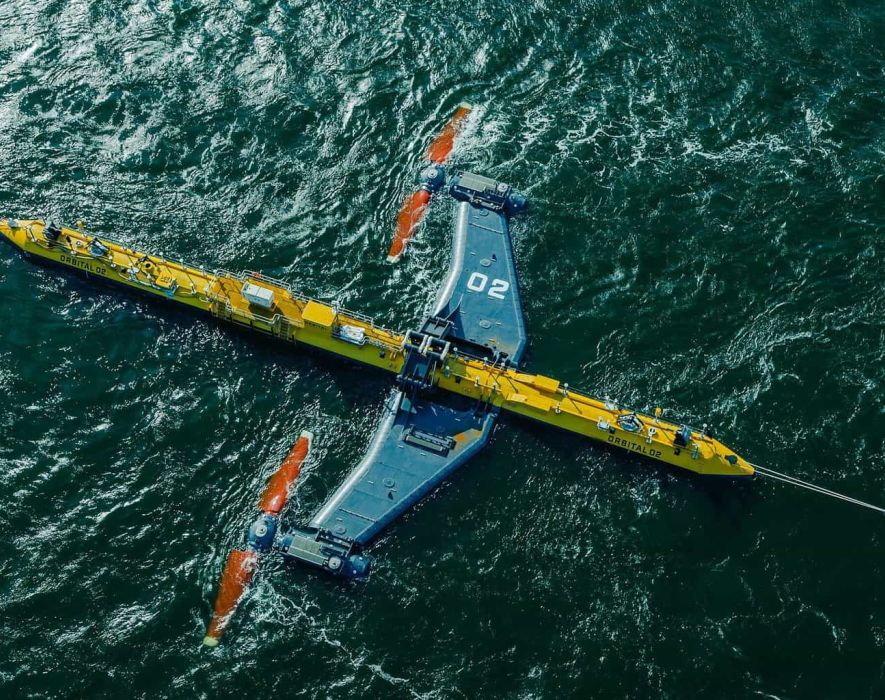
Decarbonisation of Electricity Generation on Philippine Islands – Using Tidal Stream and Solar PV

Connecting experts virtually for capacity development
Restrictions during the Covid-19 pandemic not only affected meetings with stakeholders and partners but also activities such as workshops and capacity development on the ground. NSPs had to quickly redesign and adapt their strategies to work with stakeholders and target groups. Over the period of three weeks, Brazil – Transformative Investments for Industrial Energy Efficiency NSP (PotencializEE), together with its partner institute SENAI, developed an online “Train the Trainer” module for energy efficiency specialists providing solutions and services to industries in São Paulo. As a result, this NSP trained and certified around seventy experts to carry out energy audits to further invest into energy-efficient technologies and industries.
NSPs also had to find creative solutions to continue their tendering processes. The Gambia – Investing in Grid-Connected Solar PV, for example, launched a tender on a global procurement website open to interested applicants around the world. As on-site assessments were impossible during this time, the project team came up with a solution by recording videos on-site and sharing them with applicants. Even though this process caused slight delays, digital solutions helped to procure the project activities and ensure smooth progress.

Developing online applications
Digital solutions were key in reaching NSP’s ambitious mitigation goals, especially for those projects trying to reach broad target groups, such as Thai Rice NAMA. The pandemic accelerated existing efforts in digitalisation, for instance through the development of an app to link farmers with potential service providers and to concentrate on digital formats to communicate the project’s key messages.
Brazil – Transformative Investments for Industrial Energy Efficiency NSP (PotencializEE) developed a transparent and web-based monitoring and evaluation (M&E) tool, enabling participating financial institutions to access impact data in real-time to be delivered by energy efficiency (EE) consultants and small and medium enterprise (SME) staff responsible for EE projects. The monitoring and evaluation system in the form of an online platform serves to support energy auditors in directly feeding the energy consumption data from industrial facilities into the platform while developing projects. The platform shows graphics for the entire portfolio of energy efficiency projects and shares reports on key indicators. As a result, administrative transaction costs can be reduced for all entities involved. The system also includes benchmarks as reference for the most efficient industries per segment, which are made available for producers and energy auditors.
Similarly, Costa Rica Low-Carbon Coffee adjusted the modules of the CRCAFE app to optimise and digitalise the data collection and verification process of GHG inventories in each coffee mill and producers’ sector. The app, developed between 2018 and 2019, was improved in the initial phase of the pandemic in 2020, with the possibility for farmers and coffee mills to start including data on their activities with regard to fertilisation, the harvesting process, illness of their plants and GHG inventories in the coffee mills.
“Even before the Covid-19 pandemic, we realised that we need to have digital solutions in order to reach this very large number of farmers. We started to develop small YouTube videos with the key messages that we wanted to communicate and on the core technologies that we are promoting. That process was definitely accelerated through the Covid-19 pandemic.”
Thailand – Thai Rice NAMA
Interview
Costa Rica Low-Carbon Coffee reaches farmers through the CRCAFE app
David Alfaro Obando, project manager from Costa Rica Coffee, highlights the reasons for the success and exponential increase of users after extending the CRCAFE app at the beginning of the Covid-19 pandemic.
How did the pandemic accelerate the use of the CRCAFE app?
The app was developed between 2018 and 2019, so before the pandemic. However, in 2020 the pandemic pushed institutions to invest more dynamically. Thus, more funds were available to improve the app, to include more data and also to encourage stakeholders to use it. There were lots of online training sessions on using the app and many improvements were made. We saw an exponential increase in the use of the app during the pandemic.
How did the app help to achieve your project goals?
It really helped us to include more coffee mills into our project activities. For example, more than 60 coffee mills are currently part of the app. Farmers are also using the app for applying the FC component. So, this is an incentive not only for investment, but to use the technological tool that was developed.
What obstacles did you face?
I think there is a digitalisation gap when we look at the ability to use the app. So, in Costa Rica, the main obstacle is not whether an internet connection exists or people not having a device, but rather access to knowledge on how to use it and take advantage of all its features. In this case, the obstacle was very well surmounted from my perspective by inviting the farmers to use it and training them on how to use the app through online training sessions.
Did you observe any consequences or spill-over effects of the CRCAFE app?
Besides influencing other sections, such as the livestock and banana sections to develop their own metric systems, the app attracted more funds and partners.
Costa Rica – Low-Carbon Coffee NAMA


Waste Solutions for a Circular Economy
Status: Implementation Phase
Selection Round: 5th Call

Scaling-up Renewable Energy and Energy Efficiency in the Building Sector
Status: Implementation
Selection Round: 4th Call

Transformative Investments for Industrial Energy Efficiency NSP (PotencializEE)
Status: Implementation Phase
Selection Round: 5th Call

Thai Rice NAMA
Status: Implementation Phase
Selection Round: 4th Call

Decarbonisation of Electricity Generation on Philippine Islands – Using Tidal Stream and Solar PV
Status: Detailed Preparation Phase (DPP)
Selection Round: 7th Call

Costa Rica Low-Carbon Coffee
Status: Implementation
Selection Round: 1st Call

Investing in Grid-Connected Solar PV
Status: Implementation
Selection Round: 4th Call

Agriculture

Energy Efficiency

Renewable Energy

Waste Management
Engaging with target groups through social media
The Covid-19 pandemic also offered the chance to rethink and redesign strategies for reaching specific target groups. The Waste Solutions for a Circular Economy in India project seized the moment and reinforced the opportunity to engage citizens and particularly the youth target groups towards source segregation and home composting. To reach its target groups, the Waste Solutions for a Circular Economy in India team documented all project activities via its social media channels and created new content specifically for the digital sphere. By collaborating with multiple influencers working on composting and reducing waste, the NSP observed a multiplier effect, and reached far more people than by concentrating only on offline awareness and capacity building activities. Providing video recordings of trainings and workshops through social media platforms enabled reaching out to stakeholders beyond the in-person participants. In the future, the NSP also plans to host virtual workshops for citizens, staff of urban local bodies, private sector stakeholders and school authorities to create awareness and build capacity on low carbon waste management solutions. By using various social media tools, such as reels, stories, live events and polling, the project has so far reached more than 50,000 users through its social media accounts on multiple platforms, including Facebook, Instagram, Twitter and YouTube.
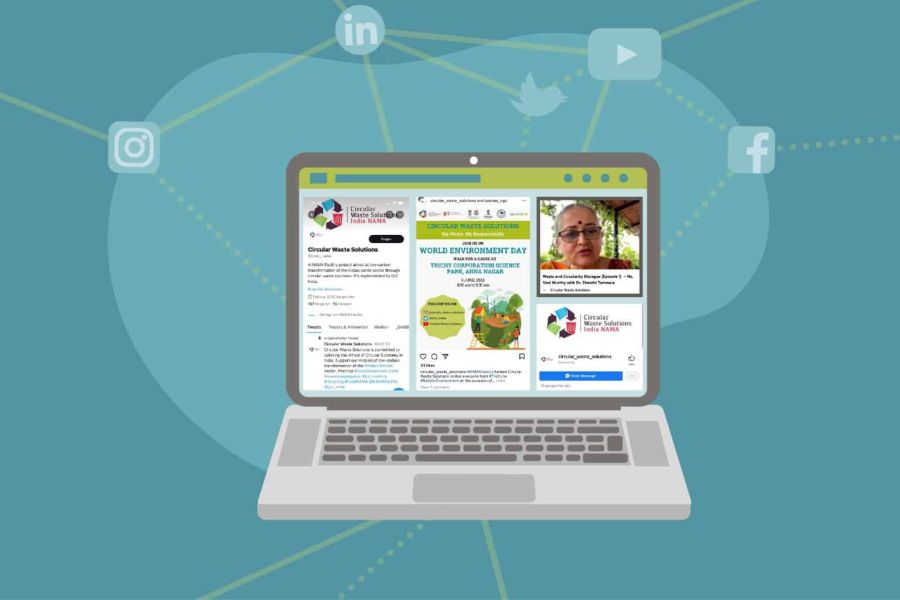
Interview
India Waste Solutions for a Circular Economy uses reels, stories, Instagram Live and YouTube shorts to reach target groups
Jai Kumar Gaurav, project manager, and Rittyz Kashyap, communications and knowledge management expert, explain how India Waste Solutions for a Circular Economy scaled up social media activities to increase awareness for source segregation, home composting and low carbon waste management solutions.
How did you increase your social media activities during the Covid-19 pandemic?
Our vision was to use social media to get wider stakeholder attention and engagement for the project. The idea was to use social media as a tool for creating mass mobilisation around the topics that we work on. So, we started to develop short YouTube video clips with the key messages that we wanted to communicate on the core technologies we were promoting. This process was definitely accelerated through the pandemic because we basically did not have an alternative to organise in person workshops and events.
Which platforms do you use?
We really made an effort to ensure the project had dedicated social media accounts: Twitter, Facebook, YouTube, Instagram and LinkedIn – we left no platform out.
What kind of content is best to reach your target groups?
We put in a lot of effort to make interesting content. At the same time, whatever we do adds to the impact of our project. For example, we visited a recycling facility and posted about it. And then we received inquiries from people through social media saying: “Okay, how do you do this? We are interested in it. Where was this?” So, you can say that the replication impact of social media work is quite significant.
Will you continue your social media activities even after Covid-19 restrictions are lifted?
We’ll post something from our social media accounts every day from one of the cities. One day it could be a shorter post, another day, a longer one. The content will keep varying, but engagement is very high.
India – Waste Solutions for a Circular Economy
Benefits and lessons learnt from the transition to digital tools
The Covid-19 restrictions pushed NSPs to break new ground and accelerated the development of digital solutions. At the beginning of the Covid-19 pandemic, NSPs faced complex challenges such as lack of access to stable Wi-Fi connections or the need of additional training to explain the use and benefits of new apps and tools. Hence, many NSPs had to review and reorganise their activities to adapt to this novel situation. In reaction to the restrictions at the beginning of the pandemic, Costa Rica Coffee for example put their FC component on hold and concentrated on alternative financial mechanisms and technical developments such as the extension of the CRCAFE app. By handling these obstacles, NSPs learned for future project activities and promoted innovative and creative digital solutions.
Online meetings, with the help of various tools, made processes more efficient and facilitated the process of bringing in local, national and international stakeholders, as Covid-19 restrictions normalised ad-hoc meetings with partners from around the world. Meetings became more efficient, and the frequency of discussion increased. In the case of The Gambia – Investing in Grid-Connected Solar PV, the project team paired international consultants with national ones for support and complementarity, given the limitations on travel. In this sense, digitalisation during Covid-19 not only posed a challenge due to the prohibition of physical face-to-face meetings, but it brought colleagues and stakeholders closer together, hence enhancing greater ownership and identification with the project itself.
Due to less international travel, carbon emissions were also positively affected, contributing to the overall goal of the NAMA Facility towards transformational change. As Covid-19 restrictions are lifted and the virus’ spread seems to have become more manageable, most NSPs have turned to hybrid models, combining online and offline solutions. For meetings, NSPs pursue a hybrid strategy: online meetings with national and international partners, where possible, and offline meetings, when needed to build more trust and discuss project developments in more depth. Digital solutions, such as the online platform for M & E developed by Brazil – Transformative Investments for Industrial Energy Efficiency NSP (PotencializEE) and extensions of the CRCAFE app to reach coffee farmers will be used and extended even after restrictions are lifted, as they facilitate internal and external processes and ensure increased efficiency. Thus, Covid-19 restrictions accelerated digitalisation efforts sustainably.
“We’re more open to interacting on an ad-hoc basis with international colleagues, international consultants, and national stakeholders, all on the same platform. We were doing this before Covid-19, but now it’s become normalised for us. And it definitely adds to the progress of the project because you get different perspectives on a regular basis.”

60
50,000
EUR 147 m
Laying the foundation for dedicated climate action efforts
“We have this responsibility – and I’m talking from the perspective of NSPs around the world – to provide actors with very good data demonstrating why it’s important to invest now before it’s too late. It could be more expensive if we do it late.”



